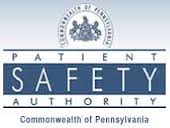New Medicare Payments to Help With High-Need Patients
New Medicare payment practices that took effect on January 1 will improve payments to physicians who care for high-need patients in the hope that those enhanced payments will improve the care such seniors receive.
 Among those improved payments are:
Among those improved payments are:
- payments to physicians for the time they spend working with specialists, families, pharmacists, caregivers, and others to coordinate services for seriously ill patients
- improved payments for time spent coordinating seniors’ transitions between different care settings and home and connecting those patients with additional resources
- separate payments to perform cognitive impairment assessments
- payments for time physicians spend reviewing patient records and talking on the phone to patients and their caregivers
- ayments for work physicians perform with their high-need patients’ behavioral health caregivers
Learn more about how Medicare is trying to improve care for its some of its highest-need, highest-cost patients in this Kaiser Health News report.

 Patient advocates maintain that all Medicaid beneficiaries with Hepatitis C should have access to the drugs and Pennsylvania’s Medicaid program appears to be on a path toward making that possible.
Patient advocates maintain that all Medicaid beneficiaries with Hepatitis C should have access to the drugs and Pennsylvania’s Medicaid program appears to be on a path toward making that possible. The Pennsylvania Patient Safety Authority has published its December 2016 newsletter.
The Pennsylvania Patient Safety Authority has published its December 2016 newsletter.

 The Pennsylvania Health Law Project has published its November-December 2016 newsletter.
The Pennsylvania Health Law Project has published its November-December 2016 newsletter. According to the federal Substance Abuse and Mental Health Services Administration, the program is
According to the federal Substance Abuse and Mental Health Services Administration, the program is In this new model, the Innovation Center
In this new model, the Innovation Center